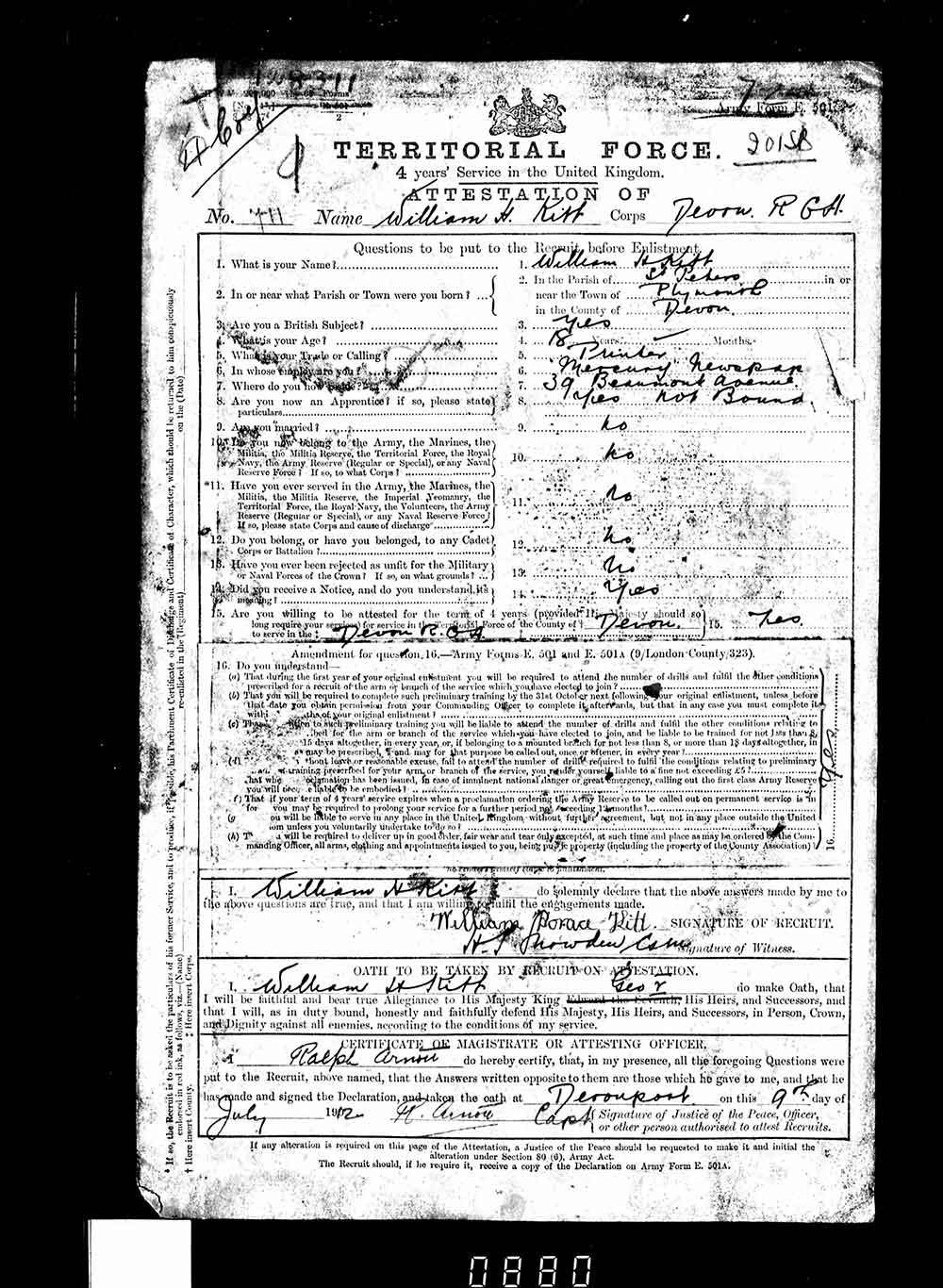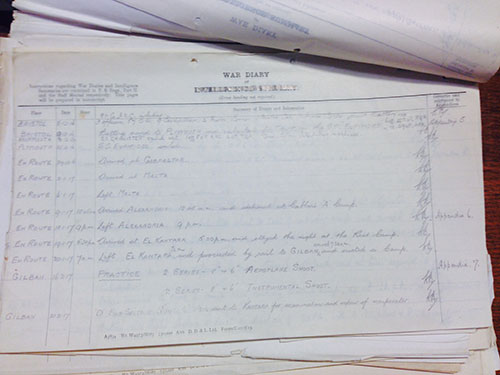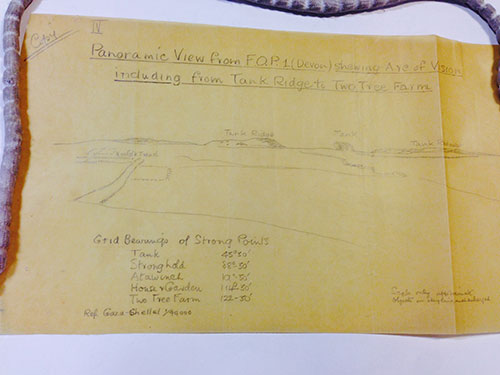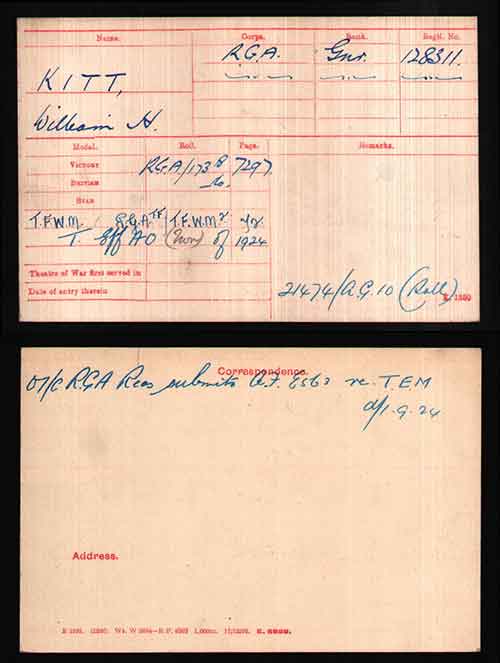A note to begin with: William isn’t my Tommy. But his story is interesting, and draws on wartime experience not often focused upon, so here is his story.
Lance Bombardier William Horace Kitt was born on December 17 1895 in Plymouth, the eldest son of 11 children of William and Lavinia Kitt. William was a baker and confectioner, and the family can be found in Flora Street and later in Beaumont Street in Plymouth in the 1901 and 1911 censuses respectively. In 1911, William was 16 and like his 14 year old brother Henry, he was a printer’s apprentice. His service records state his employer as the Mercury Newspapers, and that he was eventually a Linotype operator. He also says he is Catholic, though later it says C of E, so I’m not sure which is correct. Having researched the Mercury Newspapers, I believe this to be the Western Daily Mercury which was published in Plymouth every day (except Sunday) between 1860 and 1921, when it merged with the neighbouring paper for the Western Counties. William fudged his age a little in 1912 and signed up for the Territorials claiming to be 18. His service records show he came clean a few years later and he was actually only 17 and a half when he signed up.
William joined the Devon Royal Garrison Artillery on July 9, 1912, Rgt. No. 711, and was assigned to 4th Company Devon RGA (territorial) . In early 1913 he joined the Special Service Section of the Territorial Forces as part of the South West Coastal Defence. He enlisted for service on August 5 1914 in Plymouth and on 27 October 1914 he signed up to transfer out of the territorials and into the regulars. When you hear about such young lads joining up, you can’t help but muse about how young, how little they were. 17 is awfully young. And William wasn’t a big lad. 5ft 7 1/2 tall, with a chest girth of 30.5″. One of the most interesting aspects of this service record is that we can read William growing, physically and intellectually, through his service. By 1916, William had grown an inch in height and gained a hefty five inches to his chest!
William qualified as a First Class Signaller on June 23 1916, and was subsequently posted to “A” Siege Depot at Shoreham in mid-August 1916. Signallers were required to be proficient in morse signalling on flag, lamp and heliograph, as well as in map reading. Running wires through a war zone could be tricky work at best, if not downright dangerous. Signallers were also used in forward positions to assist the artillery and provide information on their enemy targets. This must have been terrifying in the mud and soil of Flanders’ fields and presumably even more difficult in the sands where William found himself in 1916.
The 201st Siege Battery was ordered to be formed at Crownhill, Plymouth on July 13, 1916, and the main body of the Battery moved en mass to Horsham on August 26, 1916. William’s service record shows that he arrived the day before. It looks as though William was temporarily promoted to Lance Bombadier for the duration of the movement of the Battery from Plymouth until it eventually arrived in Alexandria, after a false start where they were momentarily destined for France. He was granted Class I Part Pay on December 9 1916, the day before he left Devonport for Egypt on the SS “Euripides”. The Battery had in fact been preparing their guns to sail on the SS “Chalister” at Avonmouth for some days before they returned to Plymouth in order to sail out to Alexandria. Calling at Gibraltar and Malta en route, they disembarked at 10.45am on 9 January 1917, moving out to the Gabbari ‘A’ Camp before arriving at El Kintara.
The war diaries show the Battery settling into their new surroundings, eventually ending up in lands now found in the Gaza Strip. The company split into two parts (left and right) and I am unsure as to which William ended up in.
Happily the war diaries are kept together, both beautifully written and dutifully kept. The general theme of the day to day activities circles around shifting 6″ and 8″ Howtizers around a desert.The photograph on the right shows similar guns leaving Swindon on a train, much as the ones William worked with would have done at some stage.
One of the things I rather enjoy about reading this series of documents is the scenarios they outline which seem so highly improbable. One entry here read:
‘March 8th 1917: Destination changed to EL ARISH without notification. On arrival guns were left in palm trees about ¼ east of unloading ramp and moved to the camp in palm trees south of railway line on east bank of WADI in M16 … 8″ How[itzers]s proved very difficult to move through soft sand and at times required 3 Caterpillars’
I wonder what the locals might have done, had they stumbled across a cache of howitzers amongst the palm trees. Happily, I am able to report that no harm came to the temporarily abandoned guns. The war diaries reveal a great deal of firing practice, complaints about the nature of the territory – altogether too much sand- and the precise angles of the arcs of fire. However, I was unable to locate any specific references to William.
This map is one of the most interesting items appearing in this set of unit ward diaries, and shows the “Arc of Vision” between two points in the area they were operating in June 1917.
William was formerly promoted to Lance Bombadier Signaller on January 8 1918, and later that year, upon his return from leave he transferred to the 13th Brigade RGA, where his rank changed again to Lance Bombadier on September 13 1918. He was sent back to Chiseldon for release on February 5 1919 and demobbed March 1 1919 (without disability).
William’s company converted en masse from the territorials to the regulars in 1914, and upon his return he retained his place in the territorials. He evidently returned to Plymouth as he gives an address there on his demobilization papers, but they appears to be lodgings. He was subsequently awarded the British and Victory medals, the Territorial Forces War Medal and the Territorial Efficiency Medal.
By 1922, according to the receipt for his medals, William was living in Arabella St., Roath. He lists his occupation throughout as a Linotype operator and I cannot help but conclude that given the closure of the Western Daily Mercury in 1921, William had sought work elsewhere and found himself in Glamorgan. He married a local girl, Florence and they had two sons. William died in the late 1960s.





My impression from having reviewed a fair number of records is that 5’7″ would actually have put him above average in height at the time. 5’6″ and 5’5″ were common, and the minimum height for infantry battalions was 5’3″ – eventually the bantam battalions were formed of men who were under even that height, but otherwise physically fit.
In 1922 you said he was living in Arabella St, Roath. Roath is a district of Cardiff. My parents lived in Roath so I am familiar with the area. You were lucky to find his military record as many were destroyed in a fire.
William was my grandfather. I did not see him often (by the time I was born he was living in Cheadle, Cheshire) but my lasting recollection is of a very tall, rather intimidating man with a distinctly military bearing. By that time he would have been in his late fifties and was certainly much taller than my father who was approximately 5′ 10″ according to the mark on my kitchen wall.
my fathers eldest brother ,my father was fred kitt died 2002 aged 94 years !